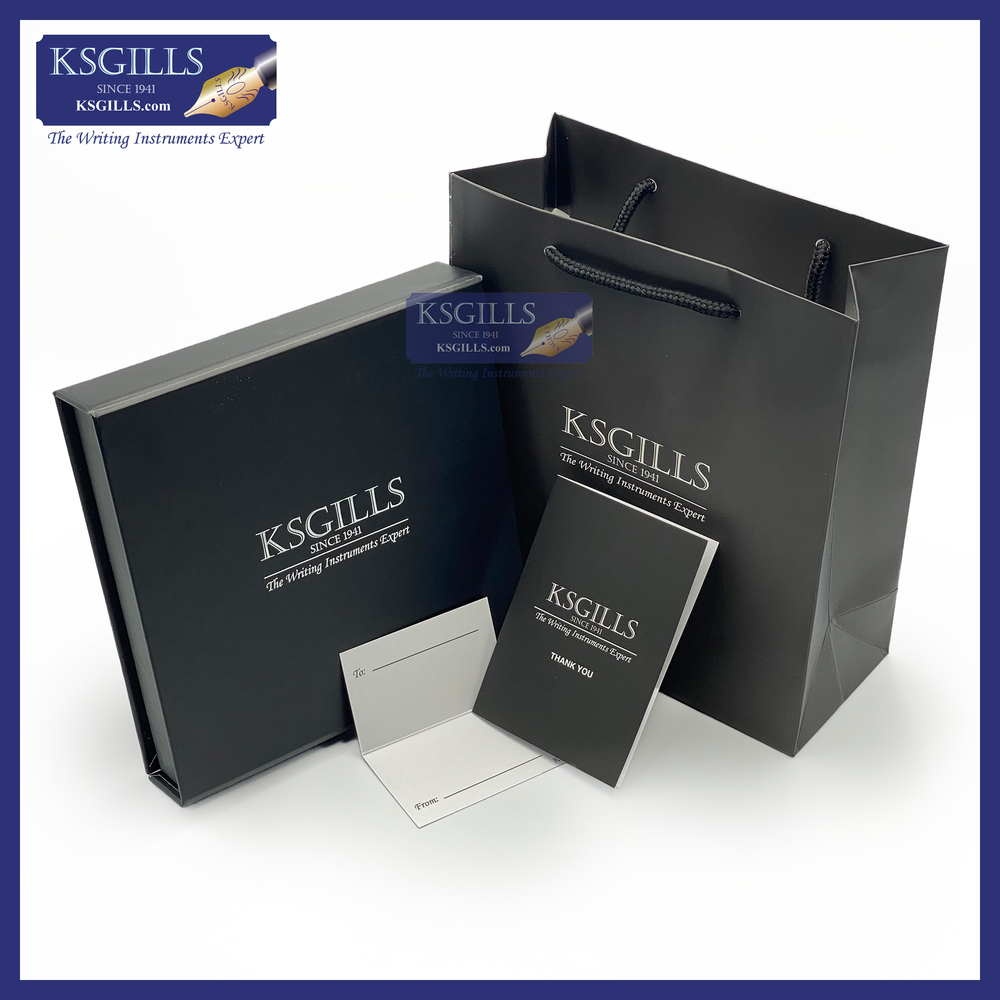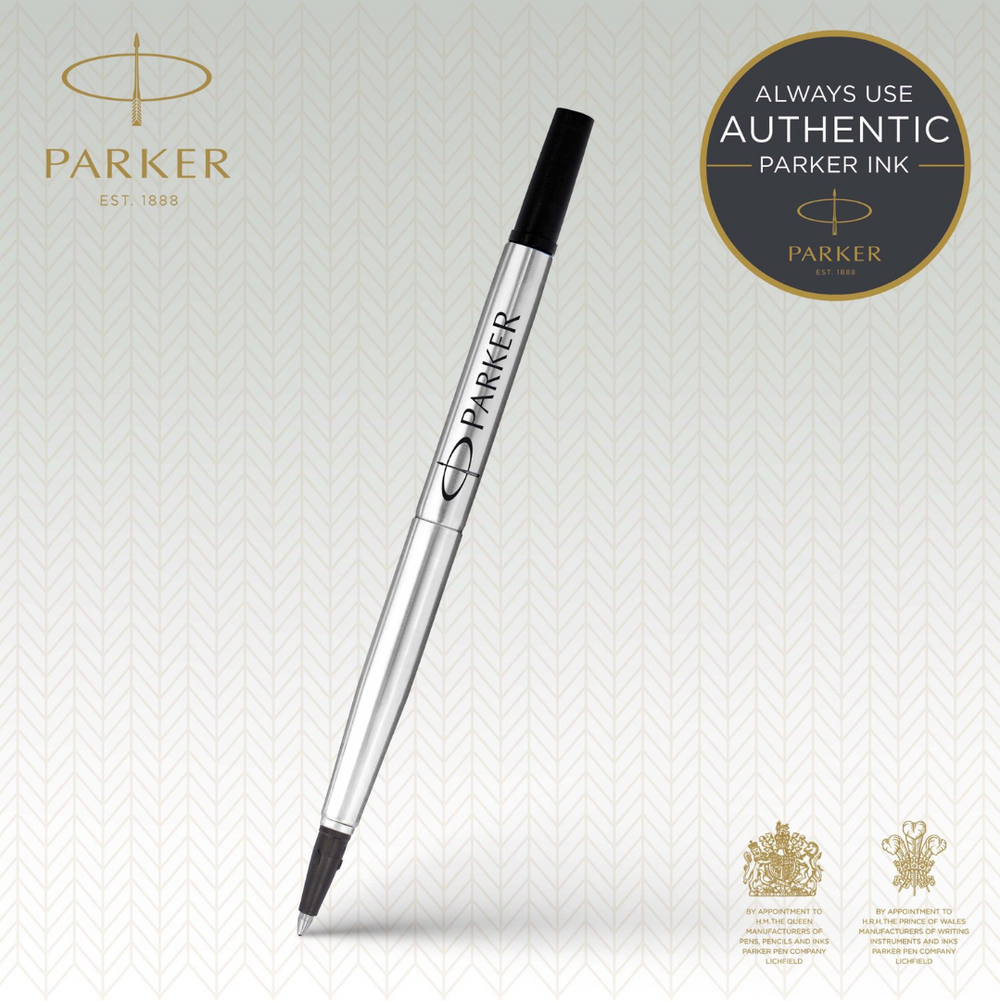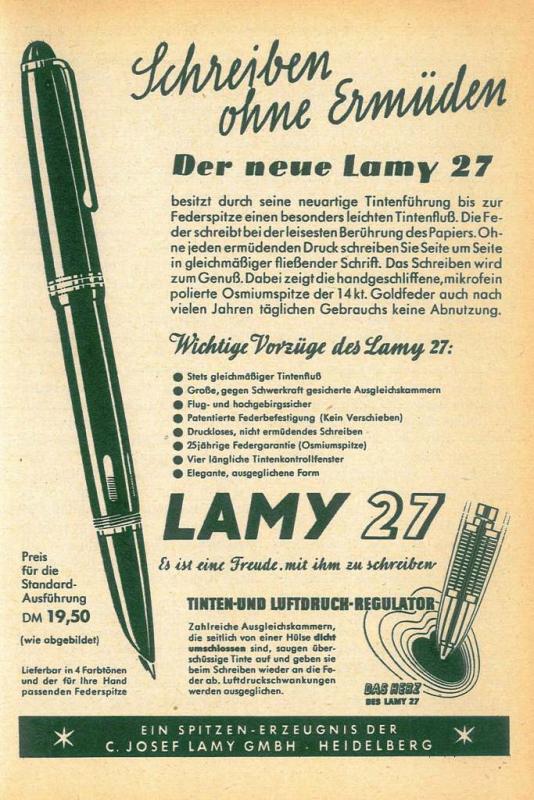October Pen History - Who Invented the Ballpoint Pen?
The first whispers came in the summer of 1944: a Hungarian inventor living in Argentina had created something sensational. Practical fountain pens with internal ink cartridges had been in use for decades, but Laszlo Biro devised a new version that used a ball bearing instead of a nib—in other words, the modern ballpoint pen. It used instant-drying ink that rolled smoothly onto the page and could write for six months—even at high altitudes—without being refilled.

Easier, more reliable pens were a huge draw for consumers. For pen manufacturers and distributors, however, the real news was that Biro had filed a patent, which meant that the company that bought the rights ought to be able to corner the ballpoint market. That was thought to be Eversharp, which TIME identified as “the biggest pen and pencilmaker in the world,” who acquired the North and Central American rights to the new pen for a half-million dollars.
Except for one thing. Reynolds International Pen Co. decided to manufacture their own version, and get it out to stores first. Eversharp’s legal attempts to stop them failed, and 70 years ago, on Oct. 29, 1945, the Reynolds pen became the first-ever modern ballpoint pen sold in the U.S.. At the New York City store that stocked it, demand was high, as TIME reported:
In Manhattan’s Gimbel Bros., Inc., thousands of people all but trampled one another last week to spend $12.50 each for a new fountain pen. The pen was made by Chicago’s Reynolds International Pen Co. In full-page ads, Gimbel’s modestly hailed it as the “fantastic, atomic era, miraculous pen.” It had a tiny ball bearing instead of a point, was guaranteed to need refilling only once every two years, would write under water (handy for mermaids), on paper, cloth, plastic or blotters.
Gimbel’s had ordered 50,000 pens to stock and sold 30,000 of them in that first week.

Other competitors soon followed, despite back-and-forth lawsuits between Reynolds, Eversharp and other manufacturers and distributors. As one of the defendants in a patent suit explained to TIME, the idea of the ball bearing was centuries old, even if Biro’s pen was new, so the patent suits were unlikely to stick.
Eventually, Eversharp and the company Eberhard Faber even filed a lawsuit accusing Milton Reynolds, the founder of Reynolds Pen Co., of a history of producing shoddy products. And sure enough, by April of 1946 about 6,000 pens (out of 100,000 sold) had been returned to Gimbel’s as faulty. But Reynolds’ first-mover advantage paid off. In just six months, Reynolds had about $5.6 million in sales.
Souce: TIME.com


![[Appreciation Gifts 2023] KSG set - Double Pen SET - Parker IM Rollerball & Ballpoint Pen - [Various Colours] - KSGILLS.com | The Writing Instruments Expert](http://ksgills.com/cdn/shop/files/WhatsAppImage2023-08-19at3.14.43PM.jpg?v=1764419608&width=900)
![[Appreciation Gifts 2024] KSG set - Double Pen SET - Parker IM Rollerball & Ballpoint Pen - [Various Colours] - KSGILLS.com | The Writing Instruments Expert](http://ksgills.com/cdn/shop/files/ksgills-fathers-day-gift-set.png?v=1764419608&width=1000)






![KSG set - Double Pen SET - Parker IM Fountain & Ballpoint Pen - [Various Colours] - KSGILLS.com | The Writing Instruments Expert](http://ksgills.com/cdn/shop/products/THUMBAIL_KSGGiftSet-ParkerIM-BlackGold-FP_BP-Main.png?v=1659158551&width=900)
![KSG set - Double Pen SET - Parker IM Fountain & Ballpoint Pen - [Various Colours] - KSGILLS.com | The Writing Instruments Expert](http://ksgills.com/cdn/shop/products/BlackGold.png?v=1693741987&width=1000)
Leave a comment